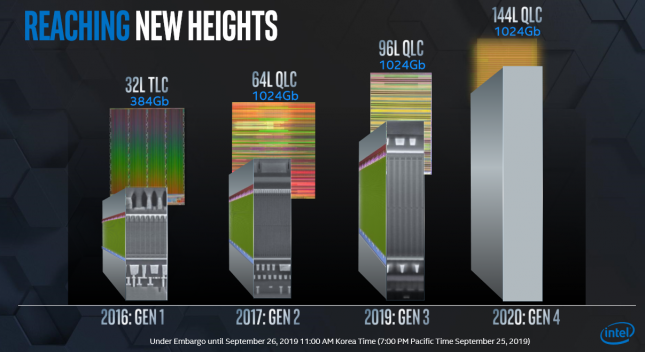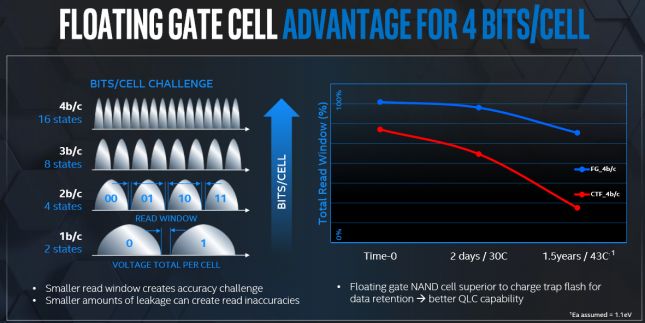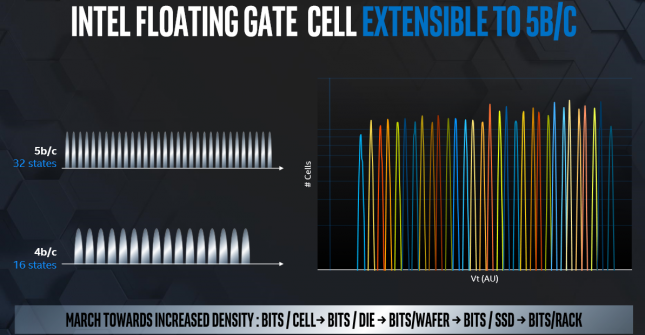Intel Announces 144-layer QLC NAND Flash – Says Penta-Level Cell (PLC) NAND Possible
Today at a memory and storage day in Seoul, South Korea, Intel announced a number of things to show that they are still fully committed to innovation in the memory and storage in the data-centric computing market. One of the major announcements is that Intel is the first to demonstrate 144-layer QLC (quad-level cell) NAND Flash that is 1024Gb in density. This is a significant milestone as it will increase data center and client-side memory density while lowering costs. The goal for any Solid-State Drives (SSD) maker right now is to get companies to replace their ‘old’ mechanical hard disk drives with SSDs that offer faster speeds, lower power consumption and less noise.
Intel expects to be using 144-layer QLC NAND Flash on data center SSDs in 2020. Intel Corporation began production and shipment of the industrys first 64-layer 4bits/cell 3D NAND technology in 2018, so the are more than doubling the number of layers in just two years. The first Intel consumer product to use 64-layer QLC NAND Flash was the Intel SSD 660P series. Intel 96-layer QLC NAND Flash is entering mass production in Q4 2019 and the first consumer product to use that will be the Intel SSD 665P series at a later date.
Competitors like South Korean manufacturer SK Hynix recently started mass production of 128-layer 4D TLC NAND Flash chips. SK Hynix also announced development of 176-layer NAND Flash, though provided no details on release. So, it seems we are in no way slowing and hitting technology limitations that can’t be overcome when it comes to vertical stacking.
Intel has been able to stick with their tried and true floating gate 3D NAND cell technology thanks to new technologies and design innovation. In fact, they believe that their floating gate cell technology is extensible to 5-bit-Per-Cell NAND Flash.
Penta-level cell (PLC) NAND Flash is something a number of companies are working on and it doesn’t look like it will be super tough for Intel to get PLC NAND Flash working based off their existing QLC NAND technologies. Intel has been able to extend the capability of their Floating Gate 3D NAND technology for years now and that continues to drive compelling new operating points for density and cost in Datacenter and Client storage.



